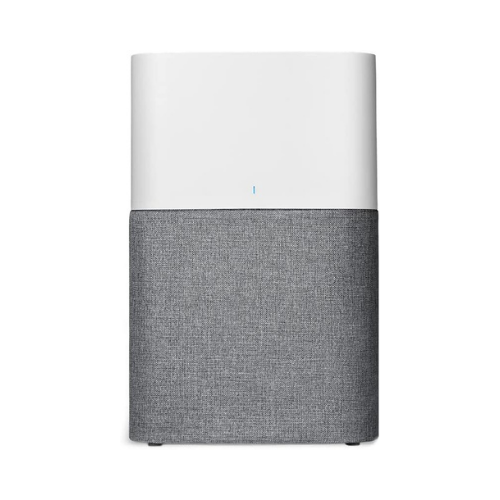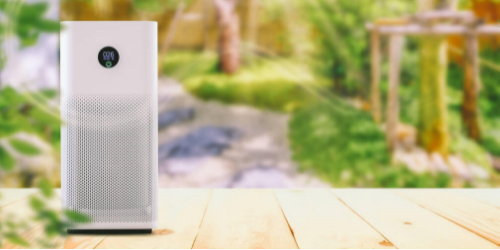How long to run air purifier?
We can expect an air purifier to purify a room in less than 45 minutes, depending on the size of the room. It also depends on the chosen power setting, the filters in the air purifier, and the ACH. The weather and the location also play a big role in how efficient the air purifier is in cleaning the air.
For instance, there may be an increase in pollen during summers, and the air purifier may take a little longer to purify the room. Since air pollutants continue to remain and the need to keep the indoor air clean is more or less constant, air purifiers are designed to run 24/ 7.
Is it safe to run an air purifier all the time?

Air purifiers have features like an air quality indicator that tells you when the air in the room has been cleaned or when the air quality is poor and needs cleaning. But, not all air purifiers come with such an indicator. That is when you start wondering if it is safe to run the unit all the time.
Nevertheless, it is clear that you should run the air purifier throughout the day, i.e., 24 hours a day. That is the only way you can be sure that the air is free of pollutants and allergens. Air purifiers are built to run all the time without any risk of failure or damage.
The air indoors can get contaminated quickly. So, switching the air purifier on and off will not help. The idea of using an air purifier is to make sure that you enjoy clean and purified air all the time.
How long does air purifier take to work?

An air purifier can take anywhere between 30 minutes to 2 hours to clean the air indoors. In around 20 minutes, you are likely to feel the difference in air quality. Several factors come into play for an air purifier to be effective, such as extraction rate, model, filter, room size, etc.
CADR specification
CADR, in other words, clean air delivery rate, is a way to measure the performance of an air purifier. The rating determines the volume of air that is cleaned per minute, depending on the airborne particles.
Therefore, the air purifier is tested against pollutants of varying sizes, including smoke, pollen, and dust. CADR is represented by multiplying the CFM by the filter’s efficiency. If the air filter is rated at 200 CFM with 80% efficiency, you would have a CADR of 160.
Room Size
It is essential to have the room measured before installing an air purifier. If you place the unit in a bigger space, it will have to work harder to clean the air or be ineffective. The same air purifier will be highly effective in a room of appropriate size.
Air extraction rate
The air extraction rate is the amount of air that the air purifier can clean per hour. It determines how quickly the air purifier can clean the air. It is measured in terms of air changes.
For instance, an air purifier with four air changes per hour will clean air twice as fast as one with only two air changes per hour.
Filter
HEPA filters are the standard in air purifiers. Some models have activated carbon filters in addition to these standard filters. Generally, one strong filter is enough as too many filters will make the airflow slower, and there will be a higher resistance to trap the pollutants. That means that air purifiers with several filters may need to run for longer to clean the air.
How often should you run an air purifier?
It is best to run an air purifier throughout the day for optimum results. But, if you cannot do that for some reason, you can switch the unit on and keep it at the highest setting for around 30 minutes before using the room. It may also take as much as an hour to remove airborne particles, depending on the size of the room.
You can turn down the setting from highest to 2-3 levels below after the first 30 minutes and continue to let the air purifier run at a lower setting.
How to save electricity when using an air purifier?
You can save electricity by using a high-efficient air purifier. Older models or those with damaged filters need to work harder to remove the dust and other airborne pollutants, thereby using more electricity. But, a high-quality air purifier allows a lower speed setting for the fan to function effectively using less energy.
What is the most energy efficient air purifier?
There are several models of air purifiers in the market. If you are looking to buy the most energy-efficient unit, it would have to be the Blueair Blue 311 Auto Medium Room Air Purifier. It is ideal for medium-sized rooms and removes 99.97% of airborne particles, including dust, dust mites, pollen, pet dander, bacteria, and viruses.
The Blueair Blue 311 air purifier has an intuitive auto mode that automatically adjusts to current air quality. It has a sensor that reports the real-time condition of the air. It also has a combination filter that traps odors and comes with a HEPA silent technology, with 23-53 dB noise levels. The filter is made of washable fabric.
FAQ Section
1. Can you sleep with air purifier on?
You can certainly sleep with the air purifier on and be safe as it is no different from having it on when awake. You may need to ensure that the purifier is not blowing air directly into your face. You will continue breathing clean air, and the silent air purifier will ensure a peaceful sleep.
2. What happens when you turn your purifier off?
By turning off the air purifier, you will be allowing pollutants to accumulate again and make it more difficult for the unit to do its job. By leaving it on throughout the day, you are ensuring that all contaminants are removed as soon as they make an appearance.
3. Should you leave the air purifier on when you are not home?
You should leave the air purifier on even when you are not at home if you want to come home and experience clean indoor air quality. You would not have to wait for the system to kick in and start purifying after entering the home. On the other hand, you will walk into a home that has fresh and clean air if you leave the air purifier on.
4. How much does it cost to run an air purifier 24 hours a day?
Usually, air purifiers are designed to work in mid-sized rooms with 200 – 400 sq. ft. These air purifiers will cost $0.24 per day if it is run on the highest setting. Smaller rooms will be the least expensive to run. A big air purifier of 100W will cost $0.32 per day if it is run on a high setting.
5. Do Honeywell air purifiers use a lot of electricity?
Like most air purifiers, Honeywell air purifiers range in watts depending on the setting. For instance, if the Honeywell 50250 is at its highest setting, it consumes around 200 watts. If it is at a medium setting, it consumes 165 watts, and at the lowest setting, it consumes 103 watts.
Wrapping Up
Air purifiers have become necessary additions to our homes regardless of where we live because of the increasing levels of air pollutants. The only question is how long air purifiers can be run or if they need to be switched on and off periodically.
We hope that the above information has answered these questions. You can safely run your air purifier 24/7. It is also the best way to ensure that you are experiencing a high quality of indoor air all the time.
Switching an air purifier off can allow contaminants to enter the room and pollute the air indoors. Moreover, the air purifier will have to work harder to remove them and restart the cleaning process.

About The Author
Olivia — a self-confessed air quality addict — is a home climate enthusiast, fresh air advocate, and someone with deep personal experience and knowledge about mold extermination. Her work was mentioned in countless notable humidity publications. Previously she was an editor at Mold Remediation.